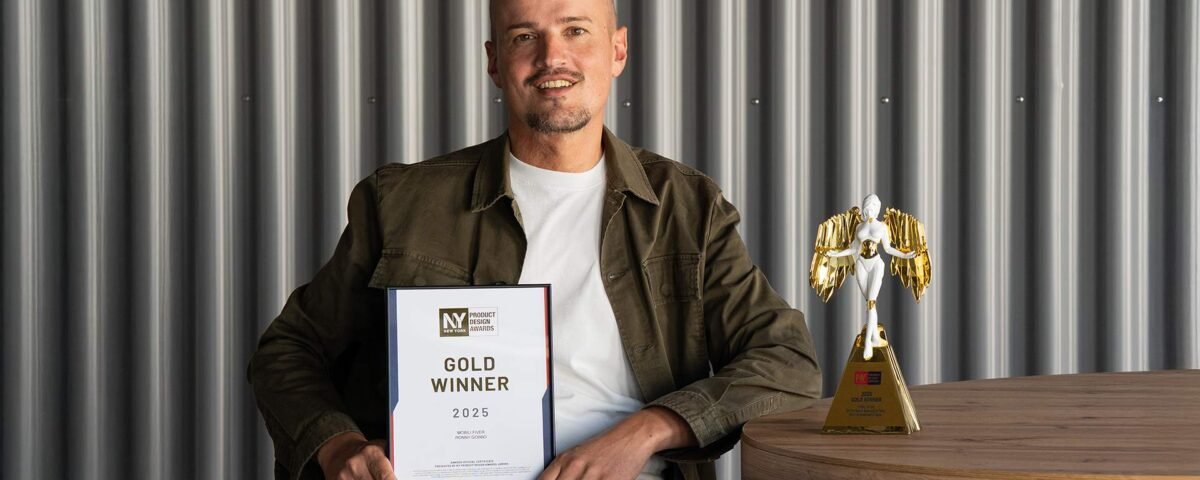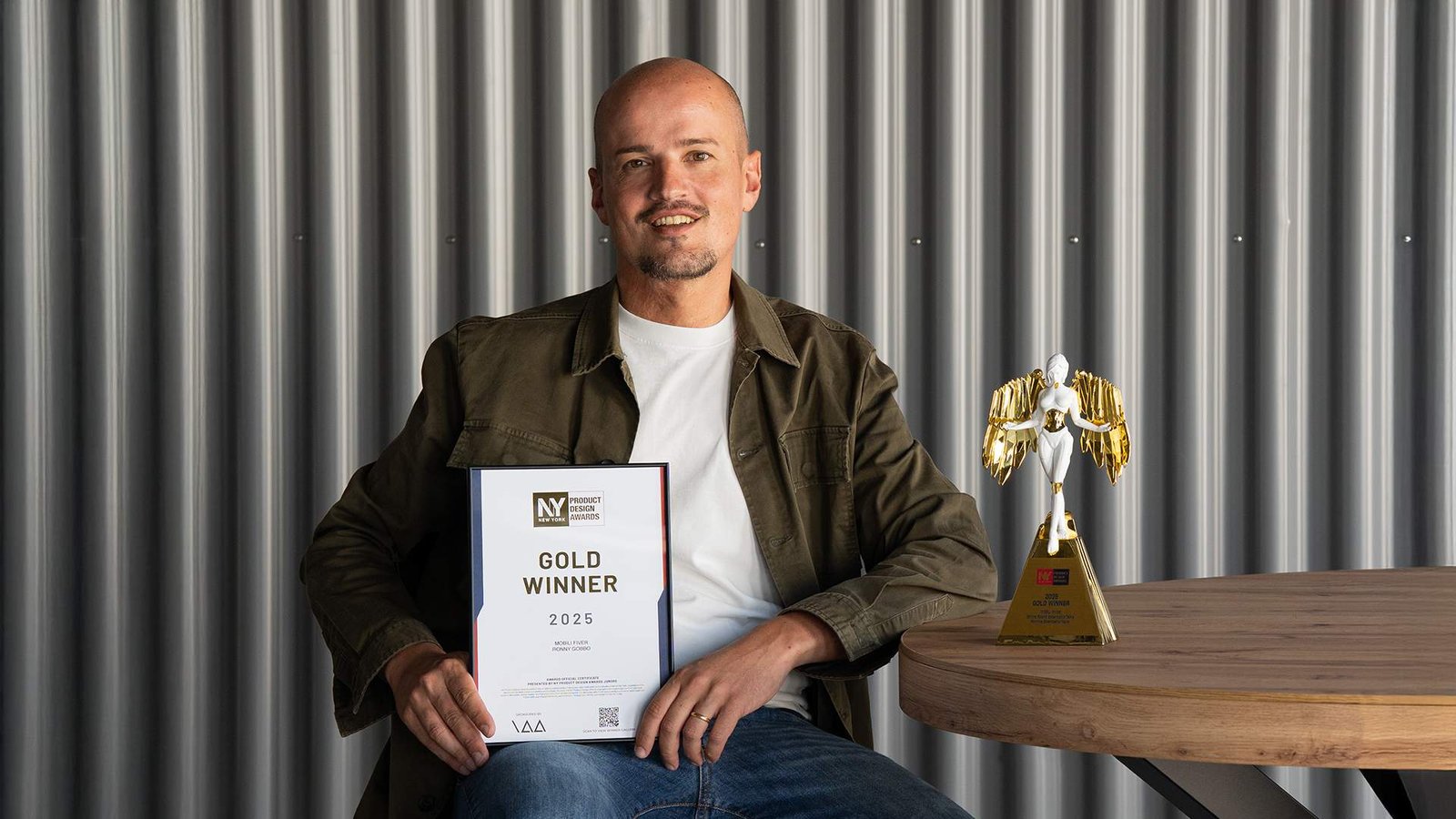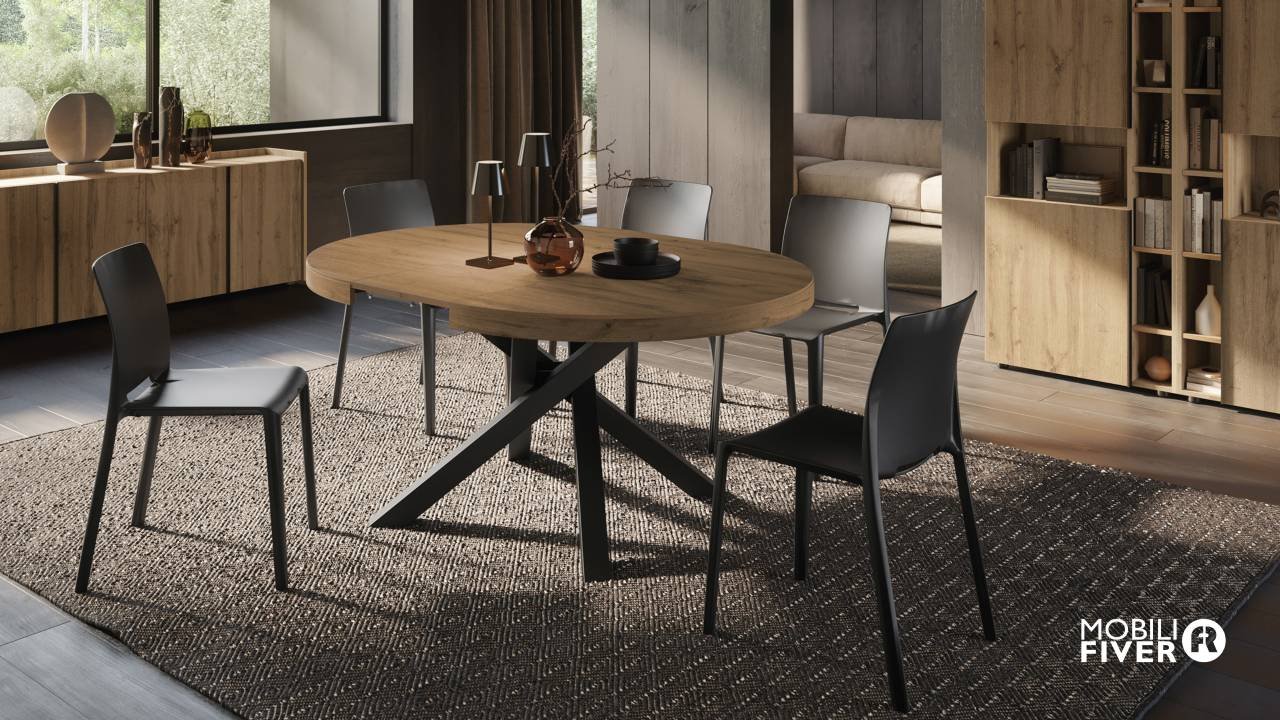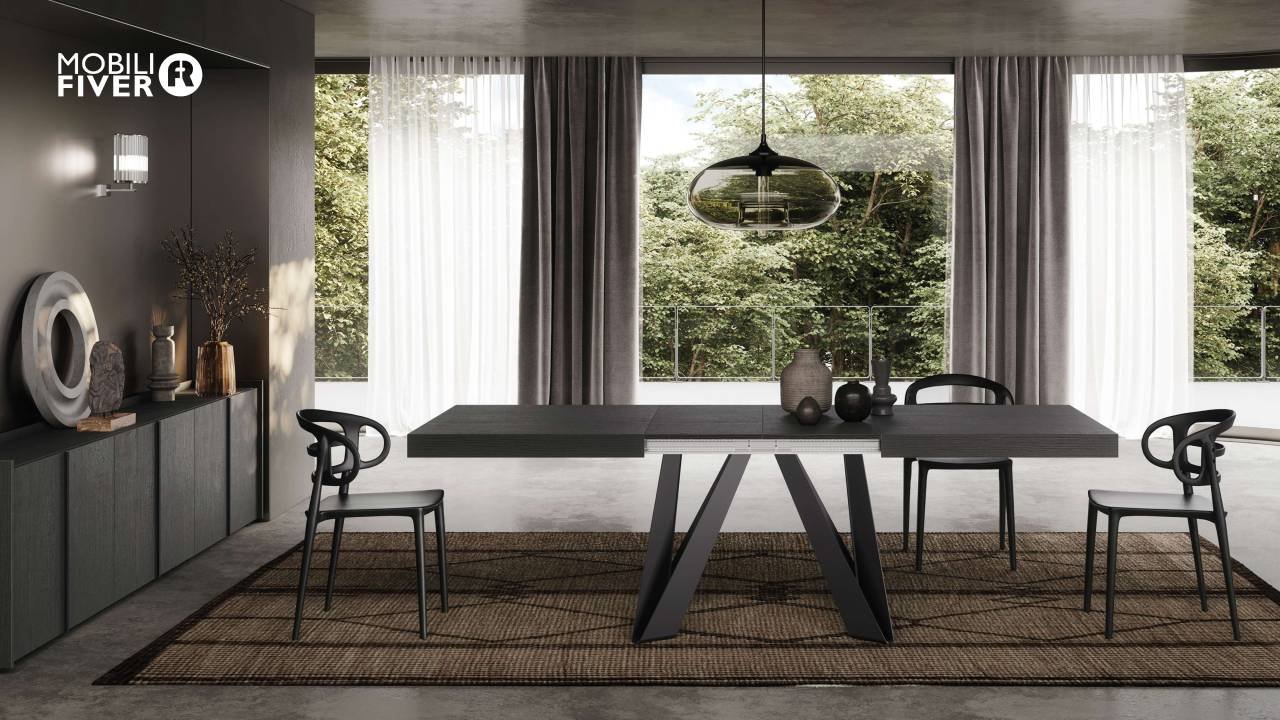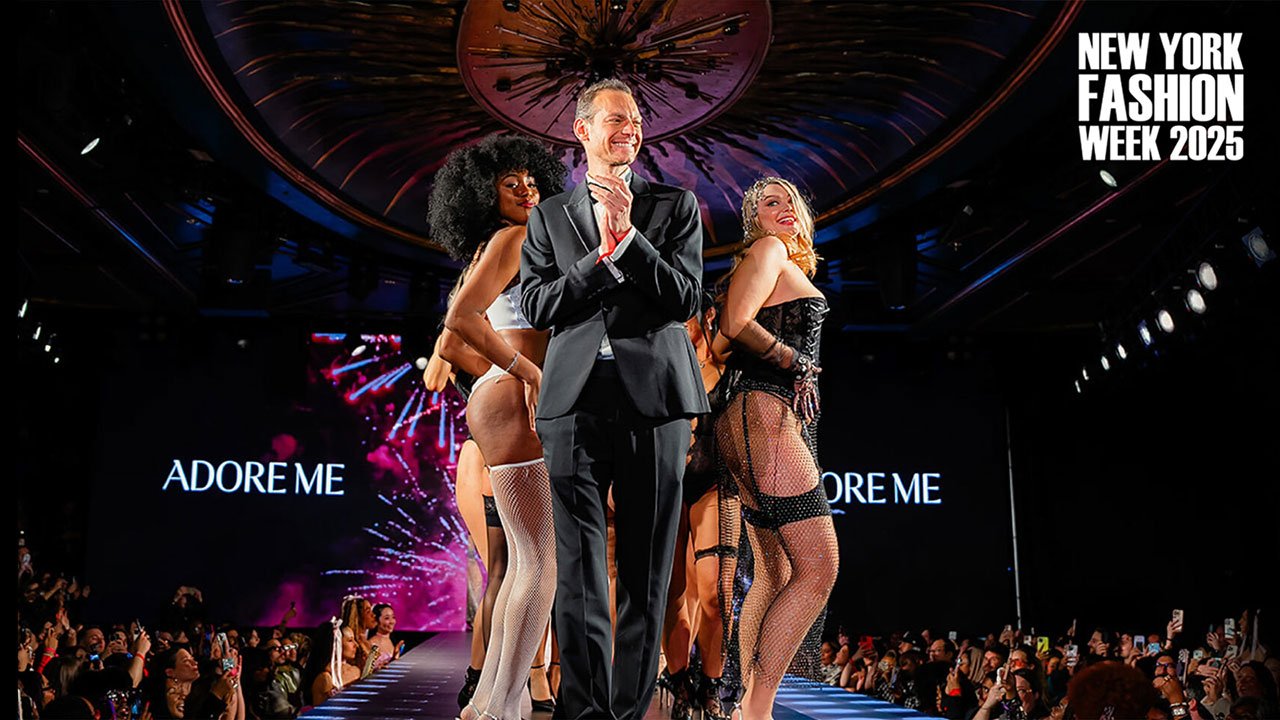1Congratulations on winning the NY Product Design Awards! Can you introduce yourself and share about what inspired you to pursue design as a career?
Thank you! I’m Ronny Gobbo, CEO and designer at Mobili Fiver. Design has always been part of my DNA—I grew up surrounded by craftsmanship and creativity. What inspired me to pursue design was the opportunity to shape how people live and interact with their spaces. I believe that good design is a quiet partner in our daily lives, improving how we feel and function without calling attention to itself.
2What does being recognized in the NY Product Design Awards mean to you?
Being recognized by the NY Product Design Awards is an incredible honor. It validates our commitment to creativity, quality, and thoughtful innovation. It’s also a sign that our work resonates globally, and that fuels our drive to keep pushing boundaries and crafting designs that truly matter to people.
3How has this achievement impacted your career, team, or agency, and what opportunities has it brought so far?
This award has had a powerful impact. It elevated our visibility and credibility, not only within the design community but also with our customers. It has already sparked new conversations and collaborations, encouraging us to continue delivering bold, elegant, and functional pieces. It’s a morale boost for our entire team—a reminder that our dedication pays off.
4What role does experimentation play in your creative process? Can you share an example?
Experimentation is essential. For example, with the Emma table, we explored dozens of prototypes to perfect the mechanism that allows for its transformation. Through trial and error, we found a solution that was both beautiful and surprisingly simple for the user, proof that persistence and curiosity often lead to elegant results.
5What's the most unusual source of inspiration you've ever drawn from for a project?
One of the most unusual and meaningful sources of inspiration was a tree. Observing its structure—how it anchors deeply in the ground yet extends freely upward—gave us insight into how to balance solidity and lightness. That natural elegance influenced the way we designed the base of one of our tables, creating something that feels both grounded and dynamic.
6What’s one thing you wish more people understood about the design process?
That design is not just about how something looks—it’s about how it works. It’s a journey made of research, iteration, and testing. Good design is invisible when it works perfectly, and that perfection takes time, feedback, and a deep understanding of the user’s needs.
7How do you navigate the balance between meeting client expectations and staying true to your ideas?
It starts with listening. I work hard to understand the client’s objectives and then propose solutions that meet those needs while remaining true to the core of my design philosophy. I see it as a conversation, not a compromise—where both visions evolve and strengthen each other.
8What were the challenges you faced while working on your award-winning design, and how did you overcome them?
One key challenge was achieving the right balance between aesthetic and utility. With the Romina table, we had to ensure its striking silhouette didn’t hinder its functionality. We overcame this by involving users early and often, through real-world testing and feedback loops. That collaboration across design, engineering, and marketing was vital to refining the final product.
9How do you recharge your creativity when you hit a creative block?
When I hit a block, I disconnect. I take a bike ride, spend time in the mountains, or listen to music. That space gives my mind a chance to wander—and often, the solution appears when I least expect it.
10What personal values or experiences do you infuse into your designs?
Empathy, sustainability, and honesty. I want my designs to be intuitive and inclusive, and I believe they should respect the environment. Growing up in a family business taught me the importance of making things that last, both physically and emotionally.
11What is an advice that you would you give to aspiring designers aiming for success?
Stay humble, stay curious. Keep learning, and don’t fear failure—it teaches you more than success ever will. Surround yourself with people who challenge you. And always, always design for the user, not for your ego.
12If you could collaborate with any designer, past or present, who would it be and why?
I would choose Renzo Piano. His work combines architectural precision with poetic vision. What I admire most is his ability to create spaces and objects that feel human, harmonious, and respectful of their surroundings. He proves that design can be both technically complex and emotionally moving.
13What's one question you wish people would ask you about your work, and what's your answer?
“What do you want people to feel when they use your designs?”
My answer: I want them to feel that someone thought of them. That the design understands their needs, fits their life, and brings a quiet sense of joy to everyday moments.



